Loft Insulation Costs in 2024
- Savings of up to £600 on your energy bills
- Self installation or by a professional
- Better heat retention for your home
Insulating a loft doesn’t have to come at a premium. There are several options available at different prices to suit any budget. As an uninsulated home can lose around a quarter of its heat through the roof, adding loft insulation is a great way to both keep heat in and save money on your energy bills. What’s more, you are able to install insulation in your loft yourself.
This article will explain the benefits of loft insulation and give an overview of the various costs you can expect to pay. As the minimum recommended thickness of insulation has increased over the years, it could prove to be beneficial to top up your existing roof insulation to make sure you’re getting the most out of potential energy savings.

What's On This Page?
Click the links below and head straight to a specific section of the article.
- How Much Does Loft Insulation Cost?
- What Types of Loft Insulation Are There?
- How Much Does New Loft Insulation Cost?
- Factors to Consider When Installing Loft Insulation
- Is it Worth Insulating Your Loft?
- What Does Loft Insulation Do for Your Carbon Footprint?
- Which Type of Loft Insulation Is Best for Me?
How Much Does Loft Insulation Cost?
There are several kinds of loft insulation available, from mineral wool to blanket and blown fibres. You can expect to pay anything from £400 for traditional quilt insulation to £90 per m² for certain types of spray foam insulation. Topping up existing insulation to the recommended 270mm thickness can cost about £500, but installing 270mm thick loft insulation from the onset, this can be as much as £700. This does depend on your property type.
Additionally, labour costs will have to be factored in, which can be around £250 a day, according to Checkatrade. You can opt to install loft insulation yourself, but it's best to make sure it’s done properly. You can negatively impact the thermal efficiency of your loft if you make a mistake, such as compacting it.
Take a look at rough loft insulation costs per property type in the graph below. The average quilt insulation price and labour costs have also been included for reference.
Spray foam insulation costs are measured in metres squared, as it's a little harder to give an estimate. Unlike quilt insulation being a certain size and thickness, spray foam needs to be installed professionally across different sized gaps using a differing amount of rapidly hardening liquid foam. While the material is the same, only so much liquid will go so far.
What Types of Loft Insulation Are There?

Blanket or quilt
Mineral wool
Sheep’s wool
Glass wool
Loose-fill
Sheet
Blown fibre
Spray foam
Costs for different types of loft insulation will vary depending on the materials being used. Natural sheep's wool is much more expensive per unit and can be difficult to install in small areas and around obstacles, such as beams or pipes. While it is natural, it’s not as effective as other forms of insulation. Blanket or quilt insulation is the standard and cheapest form on the market.
Mineral and glass wool loft insulation can irritate skin, which is why protective clothing should be worn when it’s handled. Glass wool, in particular, is less effective in damp conditions, which is why it shouldn’t be installed in roofs prone to leaks.
Sheets and slabs can be used to insulate your loft, but these are more suited for roof insulation. This keeps the heat in the loft instead of in the home. Insulating the rafters keeps a loft warm, which is useful if you need to frequently access it. It also uses more space to heat a roof this way, which drives up the cost.
Green options for loft insulation include the loose-fill kind, which consists of ground particles that can fill the smallest of gaps. The downside to this is that particularly strong draughts can displace the insulating layer and create uneven patches throughout. Additionally, protective clothing needs to be worn to prevent inhalation of any material
How Much Does New Loft Insulation Cost?
You can expect different types of insulation to cost the following amounts:
Blanket or quilt – £5/m²
Mineral wool – £15/m²
Sheep’s wool – £23/m²
Glass wool – £15/m²
Loose-fill – £7.50/m²
Sheet – £30/m²
Blown fibre – £15/m²
Spray foam – £40–£90/m²
What Is the Cheapest Way to Insulate Your Loft?
Blanket insulation is the most common and cheapest way of insulating your loft. At £5/m², it is the most budget option that performs well. Even though you are able to install it yourself for around £150 a roll, you should consider professional installation to ensure maximum heat retention. This can set you back £300–£400, but the energy savings are worthwhile.
The next cheapest option is using loose-fill methods of loft insulation, but you need to be wary of displacement if your roof is prone to draughts.
Factors to Consider When Installing Loft Insulation
There might be some unexpected issues when it comes to insulating your loft. As an example, you may have to move electrical wires, which is around £250 to do. Bigger factors to consider with loft insulation costs are included below.
Storage Space

Most people plan on using their loft for storage space, which requires boards to be laid over the joists. Unfortunately, the joists are rarely as tall as the 270mm minimum thickness needed for insulation, which can end up compacting loft insulation and decreasing its effectiveness.
Even new build developers don’t recommend using the loft for storage purposes, but if you still wish to do so, the level of the floor will need to be raised to make sure there’s enough room for the proper amount of insulation. Timber battens need to be placed across the joists or you can make use of telescopic legs to fit underneath the new floor.
Loft insulation works its best when it’s not compacted by heavy objects and when there’s a ventilation layer above it as well. Boarding up a loft should be done in a way to adhere to these conditions. An air gap prevents condensation from forming and adversely affecting the heat retention properties of any loft insulation.
Damp Lofts
If your roof suffers from damp or any serious leaks, it’s important to get these resolved before having insulation fitted. Fitting insulation in the loft makes your living spaces warmer, which results in a colder loft. If you have underlying issues with damp or condensation in your loft, this will make the problem worse. Ventilation may need to be increased to get around this issue.
We do advise seeking professional advice before installing loft insulation, especially if you already experience issues with damp.
Ventilation
A consistent flow of air is important in the home to keep it fresh and dry. If you are fitting insulation yourself, you should be conscious about not blocking any existing ventilation. Vents, grilles or air bricks need a free flow of air to work properly, which will be hindered if they are blocked by loft insulation.
Building Regulations are always being reviewed and updated, so it’s best to check with your local authority first before you install insulation yourself.
Accessibility
An inaccessible loft can easily make you forget about the area. If you aren’t able to use your loft, it could be easiest to have blown insulation fitted by a professional installer. This way, any difficult to reach places will be covered by effective loft insulation and you won’t have to worry about any heat escaping through your roof.
Is it Worth Insulating Your Loft?

Is insulation worth it? Absolutely! The worse off your home already is, the more you can expect to see in returns. It also depends on the type of home that you live in as well as the state of existing loft insulation.
According to data from Energy Saving Trust, you are able to save up to £590 if you install 270mm loft insulation in a detached house. The costs and savings of loft insulation can be examined in detail to see just how beneficial it is, including the environmental impact.
What Does Loft Insulation Do for Your Carbon Footprint?
Naturally, the more heat you’re keeping in your house, the less you’ll be spending to keep it warm. This is better for your environmental footprint, which has the potential to save 1,000kg of carbon dioxide equivalent a year. This is the same amount of pollution from:
120,000 smartphone charges
500 litres of diesel
2,500 miles driven in a petrol car
To effectively capture a whole tonne of CO₂, 50 trees need to grow for a whole year. When put this way, the potential environmental savings are huge.
These figures can only be achieved if a home doesn’t have any loft insulation fitted at the moment. If you’re topping up your existing 120mm insulation to 270mm, the savings in terms of money and environmental impact are lower, but no less important.
Which Type of Loft Insulation Is Best for Me?
If cost is the deciding factor, blanket or quilt insulation is the option for you. It can be installed yourself, providing you have the knowledge and equipment, or by a professional to ensure no air gaps remain.
Despite insulation needing to be installed at a minimum thickness, spray foam insulation performs much better than traditional materials. It provides the same benefits as 270mm insulation without needing to be applied as thickly. There are also several benefits of spray foam insulation that make it stand out above others.
Related articles
View all Insulation articles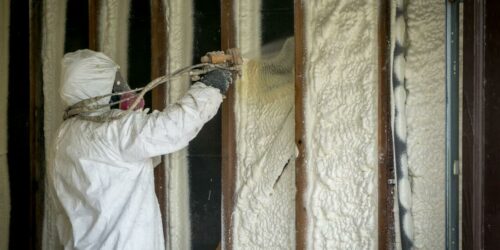
How Long Does Spray Foam Insulation Last?
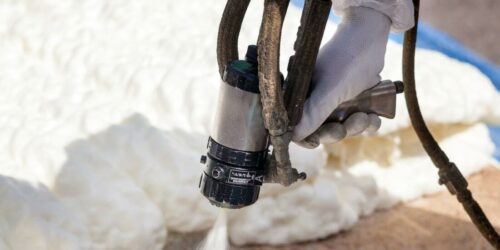
Can I Install DIY Spray Foam Insulation Myself?
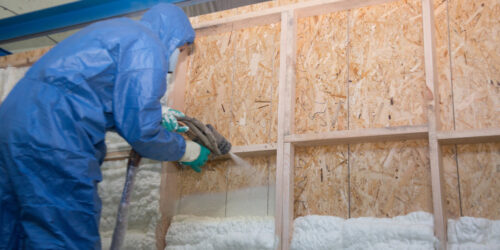
Six Benefits of Spray Foam Insulation
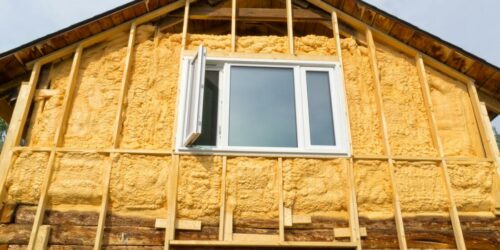
Is My Property Suitable for Spray-On Insulation Foam?

Why Consider Spray Foam Insulation in Roofs?
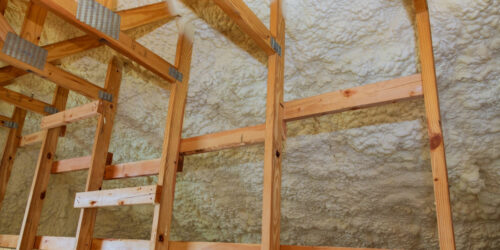
Icynene Spray Foam Insulation: A Complete Guide
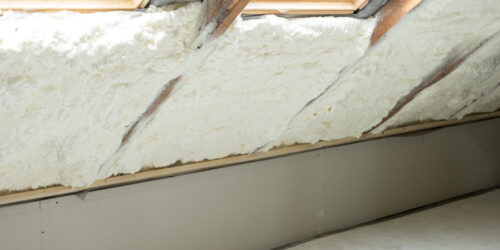
Spray Foam Insulation Installers: What to Expect







